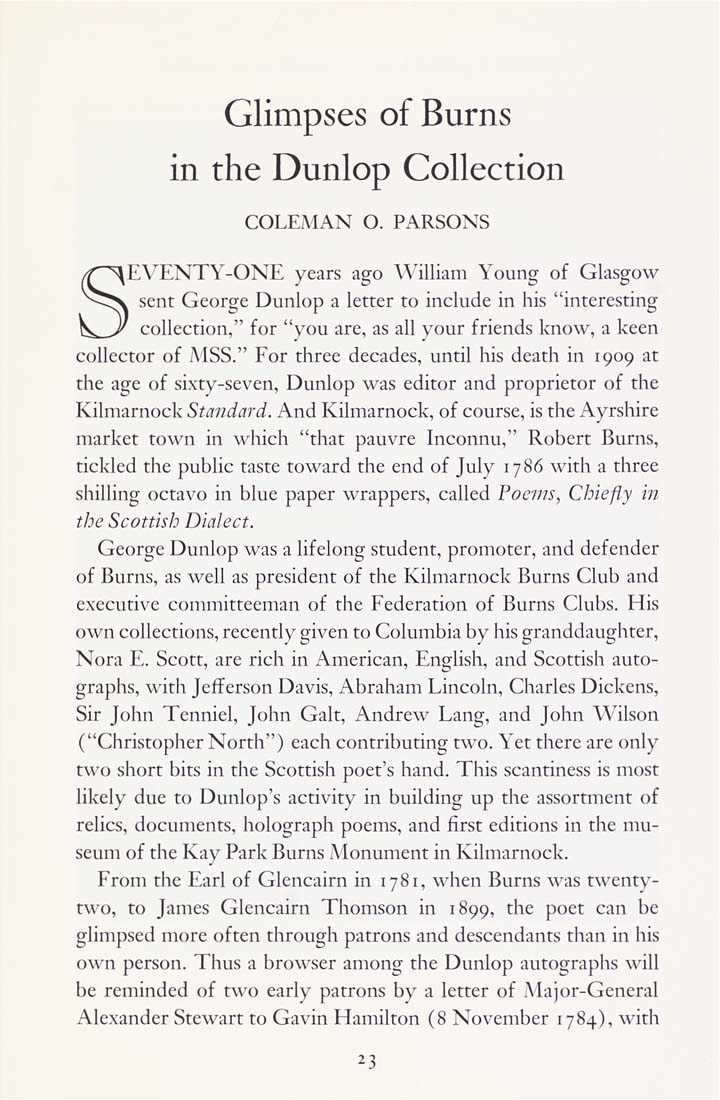Columbia Library columns (v.23(1973Nov-1974May))
(New York : Friends of the Columbia Libraries. )
|
||
|
|
|
|
| v.23,no.1(1973:Nov): Page 23 |

Glimpses of Burns
in the Dunlop Collection
COLEMAN O. PARSONS
\EVENTY-ONE years ago AMlliam Young of Glasgow
sent George Dunlop a letter to include in his "interesting
collection," for "you are, as all your friends know, a keen
collector of MSS." For three decades, until his death in 1909 at
the age of sixty-seven, Dunlop was editor and proprietor of the
Kilmarnock Standard. And Kilmarnock, of course, is the Ayrshire
market town in which "that pauvre Inconnu," Robert Burns,
tickled the public taste toward the end of July 1786 with a three
shilling octavo in blue paper wrappers, called Poems, Chiefly in
the Scottish Dialect.
George Dunlop was a lifelong student, promoter, and defender
of Burns, as well as president of the Kilmarnock Burns Club and
executive committeeman of the Federation of Burns Clubs. His
own collections, recently given to Columbia by his granddaughter,
Nora E. Scott, are rich in American, English, and Scottish auto¬
graphs, with Jefiierson Davis, Abraham Lincoln, Charles Dickens,
Sir John Tenniel, John Gait, Andrew Lang, and John Wilson
("Christopher North") each contributing two. Yet there are only
two short bits in the Scottish poet's hand. This scantiness is most
likely due to Dunlop's activity in building up the assortment of
relics, documents, holograph poems, and first editions in the mu¬
seum of the Kay Park Burns Monument in Kilmarnock.
From the Earl of Glencairn in 1781, \\'hen Burns was twenty-
two, to James Glencairn Thomson in 1899, the poet can be
glimpsed more often through patrons and descendants than in his
own person. Thus a browser among the Dunlop autographs will
be reminded of two early patrons by a letter of Major-Gcneral
Alexander Stewart to Gavin Hamilton (8 November 1784), with
23
|
| v.23,no.1(1973:Nov): Page 23 |







